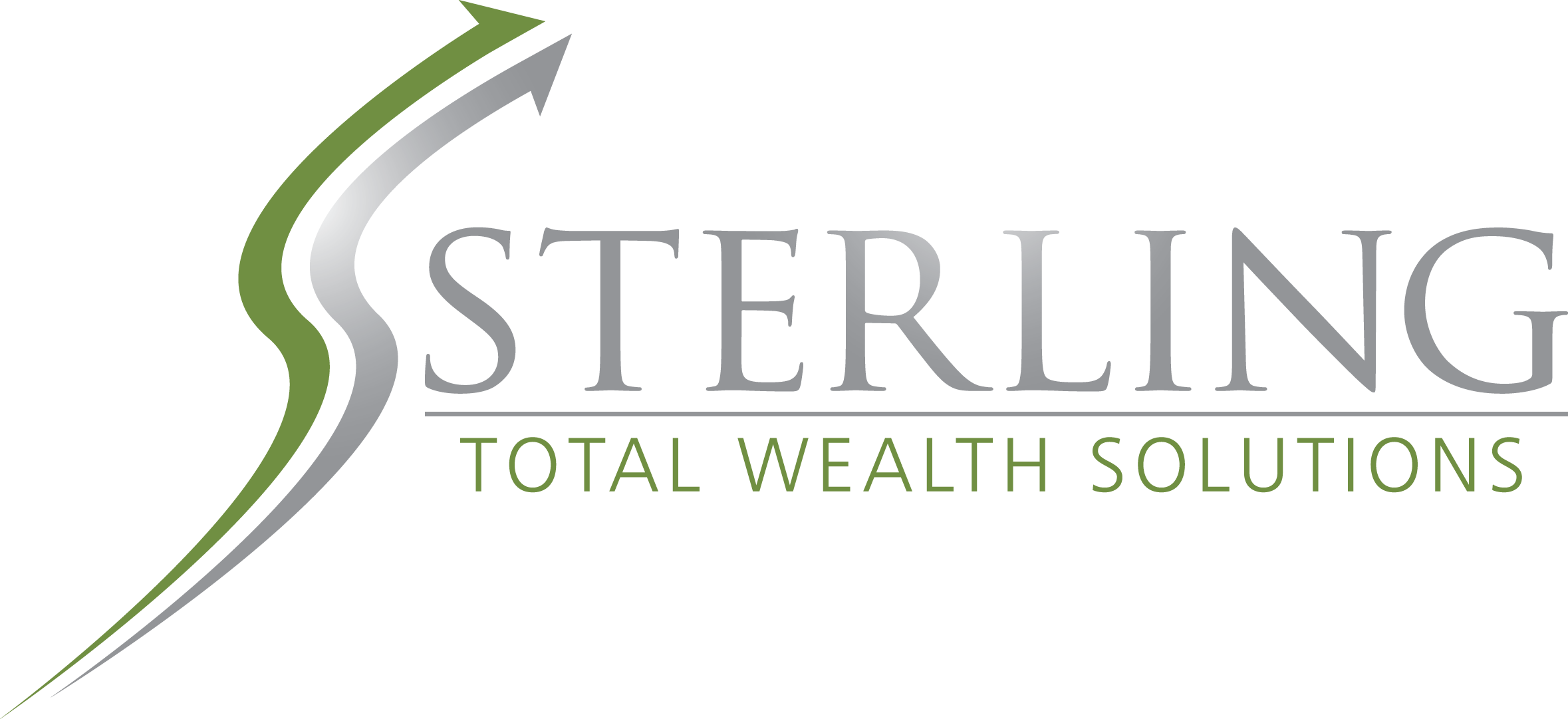In this month’s recap: stocks stay in rally mode, helped by hints that the U.S. and China may be closing in on a phase-one trade deal; hiring bounces back; key real estate indicators look stronger.
Monthly Economic Update
Monthly Economic Update | Presented by Sterling Wealth Advisors | December 2019
THE MONTH IN BRIEF
The S&P 500 rose 3.4% in November and attained a series of record closes in the process. Earnings results helped stocks, as did intermittent signals that the first stage of a U.S.-China trade agreement might be near at hand. Job creation improved, and consumer spending lived up to market expectations; consumer confidence and business activity, not so much. Housing indicators communicated good news, and the rally in stocks made the commodity sector look less attractive.
DOMESTIC ECONOMIC HEALTH
Were the U.S. and China close to signing off on the first phase of a new trade deal? According to officials from both countries, the answer was yes. When would this phase-one deal be finalized? No definite answer emerged. On November 8, President Donald Trump said that such an agreement was near, and six days later, White House economic advisor Larry Kudlow said that negotiators were “getting close” to an accord. On November 26, China’s commerce ministry announced that trade representatives had “reached a consensus” on remaining issues, and President Trump said that negotiators were in the “final throes of a very important deal.” Still, November ended without any announcement that a phase-one pact had been reached.2,3
The Department of Labor’s latest employment report found that the economy generated 128,000 net new jobs in October. This was a surprise to the upside. Analysts surveyed by Bloomberg expected 85,000 new hires. Since more people looked for work in October than in September, the headline unemployment rate ticked up 0.1% to 3.6%. The U-6 rate, which encompasses both the unemployed and underemployed, also rose 0.1% to 7.0%.4,5
Consumer spending rose 0.3% in October, representing the largest monthly gain since July. This happened even without a gain in consumer income. One prominent index of consumer confidence declined in November: the Conference Board’s consumer confidence gauge fell 0.6 points to 125.5. The University of Michigan’s Consumer Sentiment Index, however, rose to a final November mark of 96.8 from a 95.5 preliminary reading.4,6
In the business sector, the Institute for Supply Management’s purchasing manager indices of manufacturing and non-manufacturing activity both rose. The ISM Manufacturing PMI came in half a point higher for October at 48.3; the Non-Manufacturing PMI was at 54.7, nearly two points higher. For economists worried about a downturn in the business cycle, these numbers were encouraging.4
Retail sales were up 0.3% in October, and looking ahead, the National Retail Federation is forecasting a year-over-year gain of between 3.8% and 4.2% for holiday-season retail purchases. If its prediction comes true, the 2019 holiday shopping season could rank as one of the better ones seen this decade.4,6
An October jump of 0.4% for the Consumer Price Index was noticed by economists, but it still left annualized inflation at a manageable 1.8%. The core CPI, which strips out volatile food and energy costs, was rising 2.3% year-over-year through October.4
Minutes from the Federal Reserve’s October policy meeting were released on November 20, and they indicated that central bank officials were prepared to… stand pat, at least for a while. In October, most Fed officials believed the current monetary policy approach would prove adequate to guide the economy in the near term. If some event or trend prompted a “material reassessment” of the Fed’s economic outlook, then policy might shift.7
GLOBAL ECONOMIC HEALTH
The European Union scaled back its annual growth projections for 2020-21. Its latest economic forecast projects a 1.2% increase in gross domestic product for both years. This is about half the current pace of economic expansion in the United States. Inflation is projected to vary from 1.2% to 1.3%. E.U. economists believe the euro area will have a GDP of 1.1% for 2019.8
With a general election coming up in the United Kingdom, Prime Minister Boris Johnson, a Tory, and his chief challenger, Jeremy Corbyn of the Labor Party, took different views of the Brexit. In November, Johnson vowed to meet the rescheduled January 31 Brexit deadline and arrange a new trade pact with the E.U. by December of next year. Corbyn claimed his party could negotiate a new Brexit deal with the E.U. before March, a deal that would be put before the electorate; voters could either approve or reject the terms of the deal and even the Brexit, itself.9
In late November, key indicators suggested that China’s economy had slowed for a seventh consecutive month. (China’s third-quarter GDP reading was its poorest in nearly 30 years.) Through October, profits at Chinese industrial companies were down 9.9% year-over-year, a record annualized dip. An index of business confidence hit a 14-month low in October.10
WORLD MARKETS
Outside America, October index performance was mixed. Several key benchmarks advanced. France’s CAC 40 and Germany’s DAX respectively rose 3.18% and 2.35%. Russia’s RTS index gained 1.01%. Australia’s All Ordinaries added 1.45%. Japan’s Nikkei 225 was up 1.39% for the month. Eyeing a macro view of global equities, the MSCI EAFE index (which measures performance across developed stock markets outside North America) improved 1.37%.11,12
October descents to note: Indonesia’s Jakarta Composite pulled back 4.29%, Malaysia’s KLCI lost 1.02%, China’s Shanghai Composite slipped 2.78%, Hong Kong’s Hang Seng lost 1.64%, and Mexico’s Bolsa fell 1.52%.11
COMMODITIES MARKETS
Coffee was hot in November, rising 14.77%. Two other crops also realized big gains: cocoa was up 9.31%; wheat, 7.57%. WTI crude oil added 2.36% across November; at the November 29 close on the New York Mercantile Exchange (NYMEX), a barrel was worth $58.14.13
Oil was the only key energy commodity to advance in October. Natural gas slipped 12.32%. Smaller losses came for unleaded gasoline (1.48%) and heating oil (0.12%). While copper eked out a monthly gain of 0.09%, gold lost 3.25%; silver, 5.80%; platinum, 3.46%. Gold finished November at a NYMEX price of $1,470.10 an ounce; silver, at $17.10 an ounce. Corn fell 4.94%; soybeans, 4.36%. Cotton gained 2.13%; sugar, 2.48%. The U.S. Dollar Index improved 0.94% to 98.27.13,14
REAL ESTATE
The pace of home buying accelerated during October. According to the National Association of Realtors, existing home sales advanced 1.9% in October, partly reversing a 2.5% September setback. New home sales, however, retreated 0.7% for October by Census Bureau calculations; they were up 4.5% in September.4
Building permits were up 5.0% in the tenth month of 2019, housing starts 3.8%. The Census Bureau noted that single-family starts were up 3.2% across the 12 months ending in October, reaching a level unseen in 12 years.4,15
Freddie Mac said that the average interest rate for a 30-year, fixed-rate home loan was 3.68% on November 27. That compares to 3.78% on Halloween and nearly 5% a year earlier. In Freddie’s November 27 Primary Mortgage Market Survey, the mean rate on a 15-year, fixed-rate home loan was 3.15%. Incidentally, home loan processing firm Ellie Mae said refinances accounted for 51% of U.S. mortgage activity in October. The last month that saw so many refis: March 2015.15,16
30-year and 15-year fixed rate mortgages are conventional home loans generally featuring a limit of $484,350 ($726,525 in high-cost areas) that meet the lending requirements of Fannie Mae and Freddie Mac, but they are not mortgages guaranteed or insured by any government agency. Private mortgage insurance, or PMI, is required for any conventional loan with less than a 20% down payment.
TIP OF THE MONTH

As individuals accumulate assets, some realize that the liability coverage limit on their homeowner policy may be too low. Some opt to carry a personal umbrella liability (PUL) policy as a complement.
LOOKING BACK, LOOKING FORWARD
The Dow Jones Industrial Average reached another milestone in November, topping 28,000. It settled at 28,051.41 on November 29; on the same day, the Nasdaq Composite closed at 8,665.47, and the S&P 500, at 3,140.98. All in all, November was the best month for U.S. stocks since June, with indices shattering historical highs.17
| MARKET INDEX | Y-T-D CHANGE | 1-MO CHANGE | 2018 |
| DJIA | +20.25 | +3.72 | -5.63 |
| NASDAQ | +30.60 | +4.50 | -3.88 |
| S&P 500 | +25.30 | +3.40 | -6.24 |
| BOND YIELD | 11/29 RATE | 1 MO AGO | 1 YR AGO |
| 10 YR TREASURY | 1.78 | 1.84 | 3.03 |
Sources: wsj.com, treasury.gov – 11/29/1918,19,20
Indices are unmanaged, do not incur fees or expenses, and cannot be invested into directly. These returns do not include dividends. 10-year Treasury yield = projected return on investment, expressed as a percentage, on the U.S. government’s 10-year bond.
The short-term economic outlook has shifted to some degree; anxieties about a recession arriving in 2020 have lessened. There is still optimism that the U.S. and China may reach a phase-one trade agreement, and the Federal Reserve appears comfortable with its current monetary policy stance and seems to be watching the business cycle closely.
QUOTE OF THE MONTH

“The art of living easily as to money is to pitch your scale of living one degree below your means.”
SIR HENRY TAYLOR
UPCOMING RELEASES
With 2019 winding up, here are the year’s final scheduled key economic releases and events: the November non-manufacturing index from the Institute for Supply Management (12/4), the November jobs report from the Department of Labor and an early initial December Consumer Sentiment Index from the University of Michigan (12/6), a Federal Reserve policy announcement and the latest Consumer Price Index (12/11), November retail sales (12/13), November residential construction activity and industrial output (12/17), November existing home sales (12/19), November consumer spending, the final University of Michigan December Consumer Sentiment Index, and the federal government’s last estimate of Q3 gross domestic product (12/20), November new home sales (12/23), November durable goods orders (12/24), November pending home sales (12/30), and the year’s last Conference Board Consumer Confidence Index (12/31).
THE MONTHLY RIDDLE

A trail, a union, together tied. Come across me and you will find, you cannot change the course I’m on, without me you cannot travel on. What am I?
LAST MONTH’S RIDDLE: I have numbers on my face, but cannot find 13 in any place. What am I?
ANSWER: A clock.
Securities offered through Registered Representatives of Cambridge Investment Research, Inc., a Broker/Dealer, Member FINRA/SIPC. Advisory services offered through Cambridge Investment Research Advisors, Inc., a Registered Investment Advisor. Sterling Wealth Advisors and Cambridge are not affiliated.
To learn more about Sterling Wealth Advisors, visit us on the web at www.sterlingwealthadvisorstx.com
Know someone who could use information like this?
Please feel free send us their contact information via phone or email. (Don’t worry – we’ll
request their permission before adding them to our mailing list.)
This material was prepared by MarketingPro, Inc., and does not necessarily represent the views of the presenting party, nor their affiliates. The information herein has been derived from sources believed to be accurate. Please note – investing involves risk, and past performance is no guarantee of future results. Investments will fluctuate and when redeemed may be worth more or less than when originally invested. This information should not be construed as investment, tax or legal advice and may not be relied on for the purpose of avoiding any Federal tax penalty. This is neither a solicitation nor recommendation to purchase or sell any investment or insurance product or service, and should not be relied upon as such. All market indices discussed are unmanaged and are not illustrative of any particular investment. Indices do not incur management fees, costs and expenses, and cannot be invested into directly. All economic and performance data is historical and not indicative of future results. The Dow Jones Industrial Average is a price-weighted index of 30 actively traded blue-chip stocks. The NASDAQ Composite Index is a market-weighted index of all over-the-counter common stocks traded on the National Association of Securities Dealers Automated Quotation System. The Standard & Poor’s 500 (S&P 500) is a market-cap weighted index composed of the common stocks of 500 leading companies in leading industries of the U.S. economy. The Russell 2000 Index measures the performance of the small-cap segment of the U.S. equity universe. The CBOE Volatility Index® (VIX®) is a key measure of market expectations of near-term volatility conveyed by S&P 500 stock index option prices. NYSE Group, Inc. (NYSE:NYX) operates two securities exchanges: the New York Stock Exchange (the “NYSE”) and NYSE Arca (formerly known as the Archipelago Exchange, or ArcaEx®, and the Pacific Exchange). NYSE Group is a leading provider of securities listing, trading and market data products and services. The New York Mercantile Exchange, Inc. (NYMEX) is the world’s largest physical commodity futures exchange and the preeminent trading forum for energy and precious metals, with trading conducted through two divisions – the NYMEX Division, home to the energy, platinum, and palladium markets, and the COMEX Division, on which all other metals trade. The SSE Composite Index is an index of all stocks (A shares and B shares) that are traded at the Shanghai Stock Exchange. The IBEX 35 is the benchmark stock market index of the Bolsa de Madrid, Spain’s principal stock exchange. The FTSE 100 Index is a share index of the 100 companies listed on the London Stock Exchange with the highest market capitalization. The DAX 30 is a Blue-Chip stock market index consisting of the 30 major German companies trading on the Frankfurt Stock Exchange. The Bovespa Index is a gross total return index weighted by traded volume & is comprised of the most liquid stocks traded on the Sao Paulo Stock Exchange. The MSCI Emerging Markets Index is a float-adjusted market capitalization index consisting of indices in more than 25 emerging economies. The FTSEurofirst 300 Index comprises the 300 largest companies ranked by market capitalisation in the FTSE Developed Europe Index. The Hang Seng Index is a free float-adjusted market capitalization-weighted stock market index that is the main indicator of the overall market performance in Hong Kong. The CAC-40 Index is a narrow-based, modified capitalization-weighted index of 40 companies listed on the Paris Bourse. The S&P/TSX Composite Index is an index of the stock (equity) prices of the largest companies on the Toronto Stock Exchange (TSX) as measured by market capitalization. The Mexican Stock Exchange, commonly known as Mexican Bolsa, Mexbol, or BMV, is the only stock exchange in Mexico. The Nifty 50 (NTFE 50) is a well-diversified 50-stock index accounting for 13 sectors of the Indian economy. It is used for a variety of purposes such as benchmarking fund portfolios, index-based derivatives and index funds. The BSE SENSEX (Bombay Stock Exchange Sensitive Index), also-called the BSE 30 (BOMBAY STOCK EXCHANGE) or simply the SENSEX, is a free-float market capitalization-weighted stock market index of 30 well-established and financially sound companies listed on the Bombay Stock Exchange (BSE). Nikkei 225 (Ticker: ^N225) is a stock market index for the Tokyo Stock Exchange (TSE). The Nikkei average is the most watched index of Asian stocks. The Korea Composite Stock Price Index or KOSPI is the major stock market index of South Korea, representing all common stocks traded on the Korea Exchange. The FTSE TWSE Taiwan 50 Index consists of the largest 50 companies by full market value and is also the first narrow-based index published in Taiwan. The MICEX 10 Index is an unweighted price index that tracks the ten most liquid Russian stocks listed on MICEX-RTS in Moscow. The MSCI World Index is a free-float weighted equity index that includes developed world markets and does not include emerging markets. The All Ordinaries (XAO) is considered a total market barometer for the Australian stock market and contains the 500 largest ASX-listed companies by way of market capitalization. The US Dollar Index measures the performance of the U.S. dollar against a basket of six currencies. Additional risks are associated with international investing, such as currency fluctuations, political and economic instability and differences in accounting standards. This material represents an assessment of the market environment at a specific point in time and is not intended to be a forecast of future events, or a guarantee of future results. MarketingPro, Inc. is not affiliated with any person or firm that may be providing this information to you. The publisher is not engaged in rendering legal, accounting or other professional services. If assistance is needed, the reader is advised to engage the services of a competent professional.
CITATIONS:
1 – money.cnn.com/data/markets/sandp/ [11/29/19]
2 – cnbc.com/2019/11/15/market-listens-when-officials-repeatedly-tout-progress-on-china-trade.html [11/15/19]
3 – cnn.com/2019/11/26/investing/asian-market-latest/index.html [11/26/19]
4 – investing.com/economic-calendar [11/29/19]
5 – time.com/5716189/us-adds-128000-jobs-october-2019/ [11/1/19]
6 – foxbusiness.com/markets/us-consumer-spending-up-0-3-in-october-but-incomes-are-flat [11/27/19]
7 – nytimes.com/2019/11/20/business/economy/federal-reserve-minutes.html [11/20/19]
8 – fortune.com/2019/11/07/trade-wars-brexit-eu-cuts-growth-outlook/ [11/7/19]
9 – bbc.com/news/election-2019-50553485 [11/26/19]
10 – yhoo.it/2rAraVQ [9/16/19]
11 – barchart.com/stocks/indices/world-indices?viewName=performance [11/29/19]
12 – marketwatch.com/investing/index/990300?countrycode=xx [11/29/19]
13 – money.cnn.com/data/commodities/ [11/29/19]
14 – marketwatch.com/investing/index/dxy [11/29/19]
15 – forbes.com/sites/alyyale/2019/11/22/this-week-in-real-estate-what-happened-with-mortgage-rates-home-sales-construction–more [11/22/19]
16 – freddiemac.com/pmms/archive.html [11/27/19]
17 – foxbusiness.com/markets/stocks-wrapping-a-solid-month [11/29/19]
18 – quotes.wsj.com/index/SPX/historical-prices [11/29/19]
19 – markets.wsj.com/us [12/31/18]
20 – treasury.gov/resource-center/data-chart-center/interest-rates/Pages/TextView.aspx?data=yieldAll [11/29/19]
